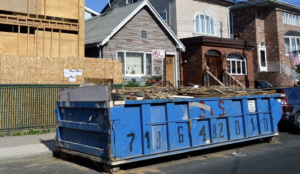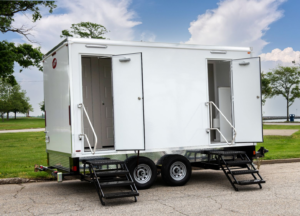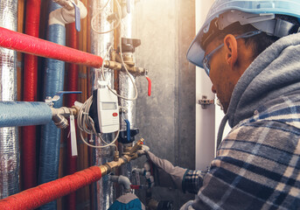Window Replacement Massachusetts can dramatically improve a home’s appearance and increase energy efficiency. New windows can also add value when it comes time to sell.

Your installer should inspect and repair any damage to the frame and exterior of your house before installing the new window. This ensures the window will fit and perform well.
One of the main reasons people choose to replace their windows is that they want better energy efficiency. This is a smart move because old windows can be major sources of heat loss, which leads to increased hydro and gas bills. Fortunately, the windows on the market today are much more energy efficient than their predecessors.
New windows are designed to keep cold air out during the chilly winters and hot air out during the scorching summers, which significantly reduces your energy bill and saves wear and tear on your HVAC system. In addition, they minimize harmful UV rays, which can fade carpet, furniture, and other components and features in the home.
Whether you’re doing full frame window replacement or simply inserting new panes into existing frames, you’ll realize significant energy savings. However, it’s important to note that the type of window you install will affect how much energy is saved. The best way to determine what style of window will work best for you is to speak with a qualified professional. They’ll be able to explain the different options available, and can help you find a product that is certified for your climate zone.
When choosing a new window, make sure to check for the ENERGY STAR label. This indicates that the window meets the ENERGY STAR requirements for your climate zone. Additionally, it will be labeled with a U-factor, which is a measure of how fast heat moves through the window.
In addition to lowering your energy costs, new windows will also boost your home’s value and increase its appeal on the market. Buyers are increasingly looking for green and sustainable features in homes, which can give your home an edge over the competition.
Window replacement can seem like an expensive undertaking, but the energy savings you’ll see on your bills will offset the cost quickly. In fact, the return on investment can be up to 80%, according to a recent report. Additionally, energy-efficient windows are becoming a standard feature in new construction, so you can easily add them to your home.
Aesthetics
Windows are a central feature of your home’s exterior and can have an impact on its curb appeal. Replacing old windows with new ones can help your home look fresh and appealing. There are a number of different window styles and finishes to choose from. Many of these are available in a range of colors and will coordinate well with your existing home’s trim. New windows also have the added benefit of increasing your home’s value. A study by the National Association of Realtors found that homeowners who invest in replacement windows can recoup about 80 percent of the cost.
Older windows often look worse for wear, and can leave gaps or cracks that allow drafts to pass through. In addition to affecting your comfort and energy efficiency, these drafts can cause moisture infiltration and mold. Window replacement will reduce these issues and protect your home from water damage and other potential problems.
A common concern among homeowners is the appearance of their homes. Often, older windows have become swollen, misaligned or have lost their original color due to sun exposure. Window replacement will provide a fresh, attractive aesthetic to your home and can make it look like new again.
There are two primary options for window replacement: full frame replacement and pocket windows. Full frame replacement involves removing the existing window frame and sashes and installing a new window. This option is best when the current frames are damaged beyond repair or when there are concerns about the structure of the existing frame.
Pocket windows, also known as “frame-in-frame” replacement, involve installing a new window within the existing frame. These windows can be installed in place of existing sashes and operating hardware but do not require the removal of the exterior cladding or trimming. This type of replacement is best when the current frames are in good condition and there are no concerns about the structure or integrity of the existing frames.
Both types of window replacement can be installed any time of year, but autumn is a great time to do it. The weather is usually dry and mild, making it easier to install the new windows. In addition, replacing your windows in autumn will help prevent moisture intrusion and other problems when the temperatures drop.
Increased Value
Buyers love to purchase homes that are energy efficient, comfortable and safe, and having new windows will go a long way in making your home more appealing to buyers. Especially in a hot real estate market, a great first impression can make or break a potential sale.
The right exterior aesthetic and curb appeal can also increase the overall value of your home. You can improve the look of your home by selecting new windows in a style that complements the rest of your home’s exterior. New windows can be found in a wide variety of colors, frames and finishes, so you can choose the ones that will best fit your home.
Besides boosting the beauty of your home, new windows can also help to protect it. Older windows may not have well-functioning locks or secure frames, which can leave your home vulnerable to intruders. New replacement windows are made with stronger glass and stronger locks, which can help to deter criminals from entering your home.
Additionally, a fresh set of windows can help to keep your home cool in the summer and warm in the winter. Energy-efficient windows help to reduce heat loss and gain, which can reduce your monthly energy bills by 12% on average.
You can even get a greater return on your investment if you decide to sell your home in the future. Buyers will be eager to buy your home if it has new, energy-efficient windows that can save them money on their monthly utility bills.
When you’re ready to replace your windows, consult with a professional to discuss the various options available for your home and your budget. A window and door dealer can help you evaluate the needs of your home and find the best solution for your windows.
Reduced Noise
Whether you live near a busy highway or an office park, noise from the outside world can be quite distracting. Homeowners often find that their windows are the main source of outdoor noise, and replacing them with new ones can drastically reduce this unwanted distraction.
In fact, many homeowners experience a decrease in noise by up to 90% with their new windows. This reduction in noise can help to create a more relaxing environment, helping you to enjoy your time at home.
The sound control offered by your windows is determined largely by the materials used to build them. Old aluminum-clad windows tend to expand and contract more quickly than other window types, which can cause hollow spaces in the frame to act as an amplifier for sounds that are emitted. When you replace these aluminum-clad windows with vinyl or wood-clad windows, the expansion and contraction will no longer cause hollow spaces that allow noise to enter your home.
Another factor in the sound control of your windows is the thickness of the glass that is installed. New replacement windows are almost always double paned, which allows for a much more significant separation between you and the outside world. This separation, combined with the quality of the window frames and inert gas filling, will dramatically decrease the amount of outside noise that can penetrates your home’s interior.
You may also notice that your windows are quieter if you choose to upgrade to more energy efficient options. For example, if you opt for i89 glass coating on your replacement windows, they will block up to 70% of solar heat gain. This will keep your home cool and comfortable, and it will save you money on your monthly utility bills.
Even if you are not ready to invest in new replacement windows, there are still ways that you can reduce the amount of noise in your home from the outside world. One option is to use acoustic caulks or spray foam to fill in any sneaky gaps or holes that are allowing noise to escape from your home. These spray products can be applied fairly quickly, and they will seal the gap to prevent the transfer of sound.



